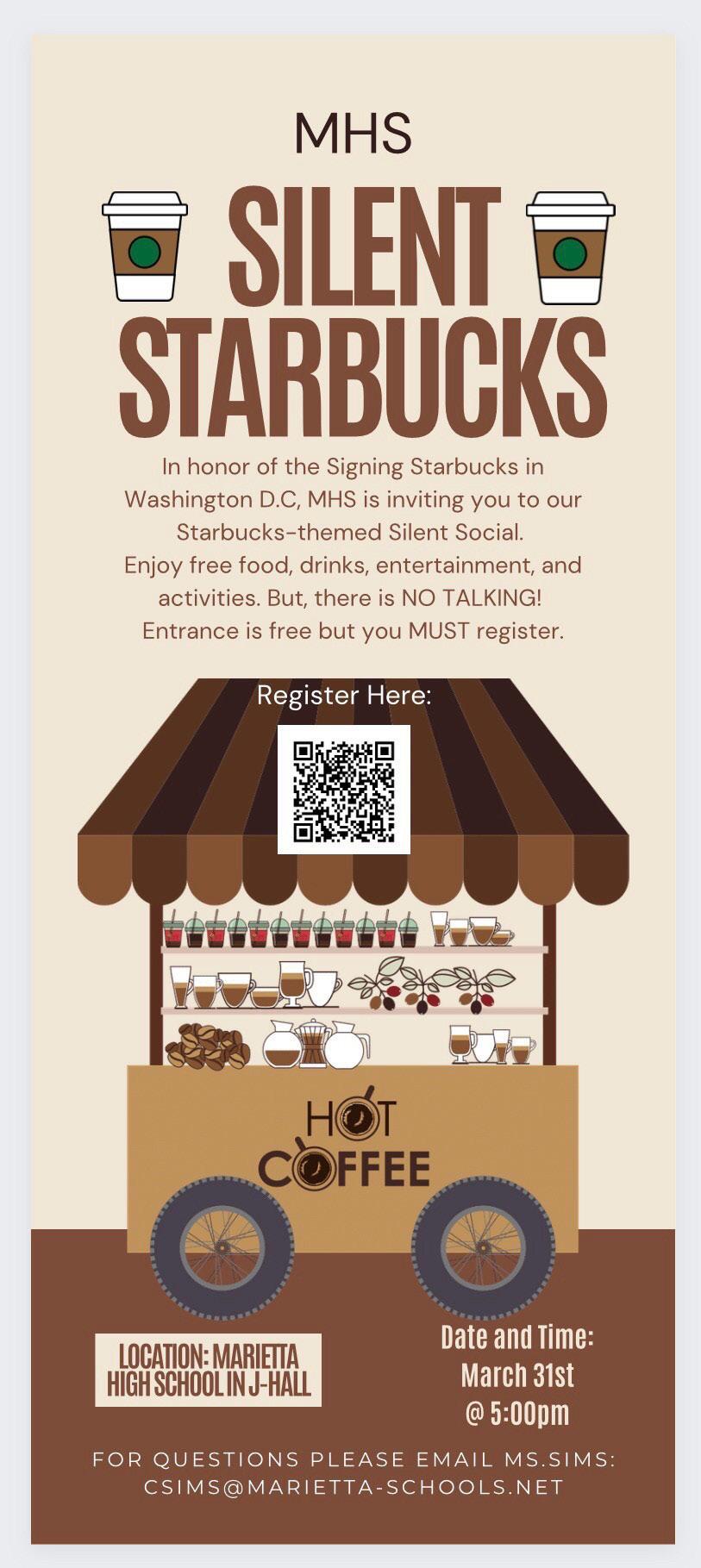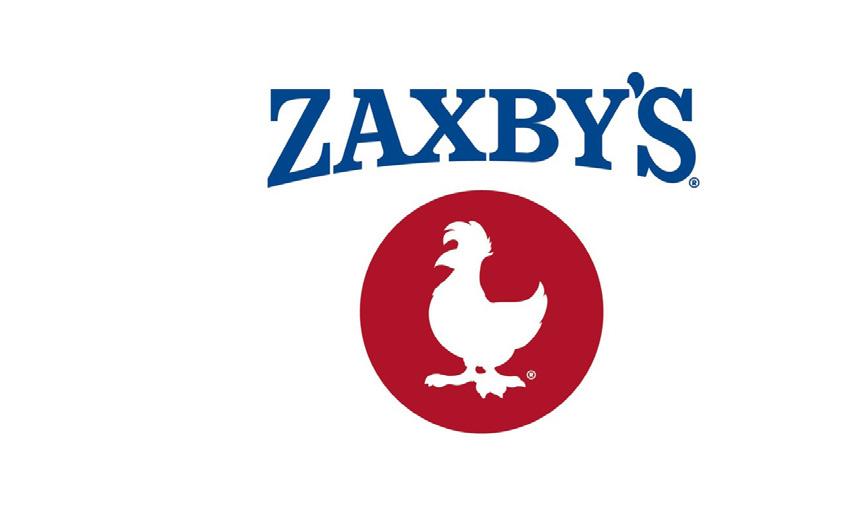
4 minute read
ASL class provides awareness about deaf culture
Alexandria Kelly Staff Writer
The ASL program began in the fall of 2021 at Marietta High. This school year, the ASL program added a second level class.
Advertisement
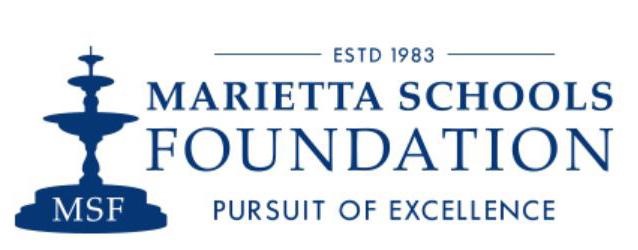
“I wanted to join the ASL class because I have always wanted to learn it, and this was the way I could do that,” Izzy Foresee (11) said.
Rose Hicks (11) became interested in the class because she believes the language is beautiful and wanted to learn more about it.
The new class and curriculum introduce Deaf culture and the importance of the language. For some students it was a newfound interest while others were excited for the opportunity to arrive at MHS.
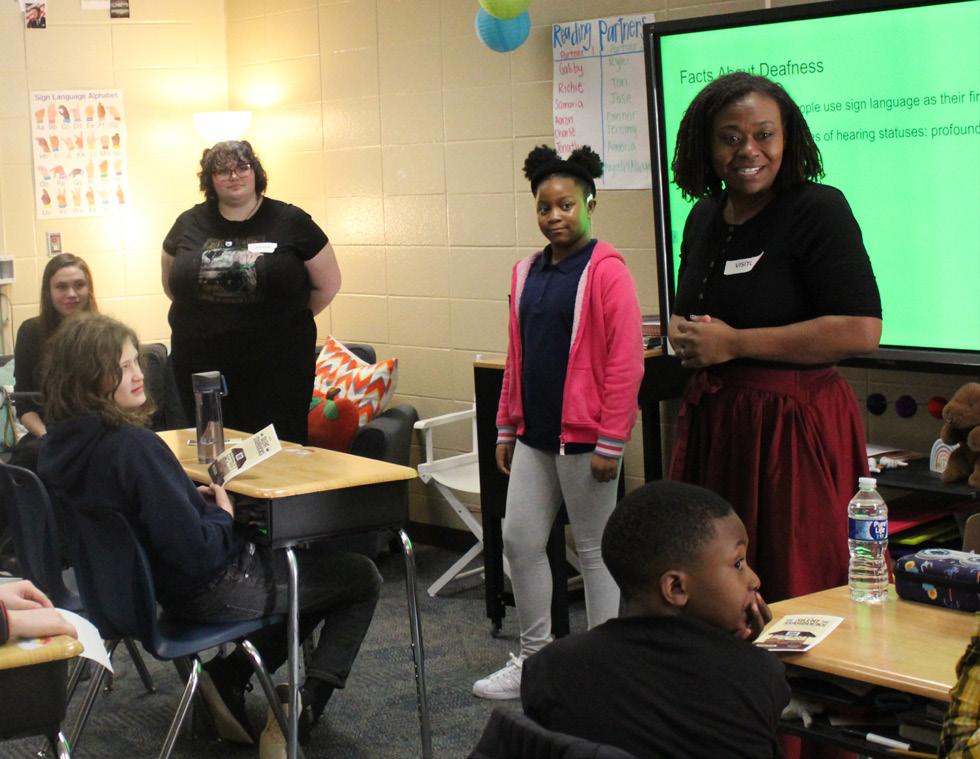
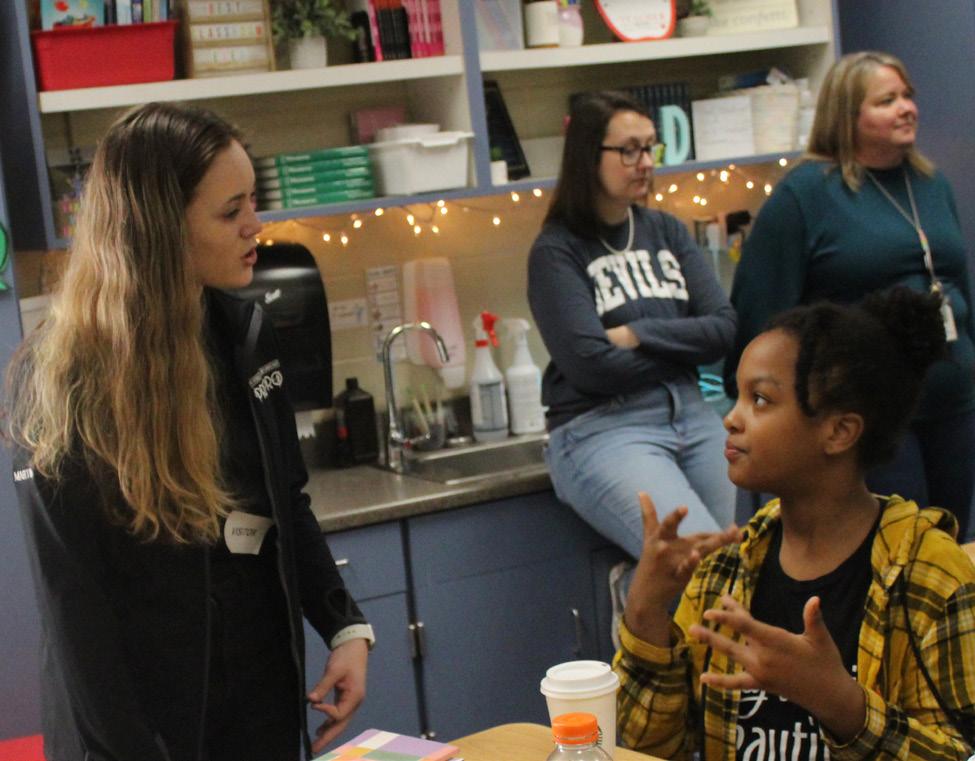
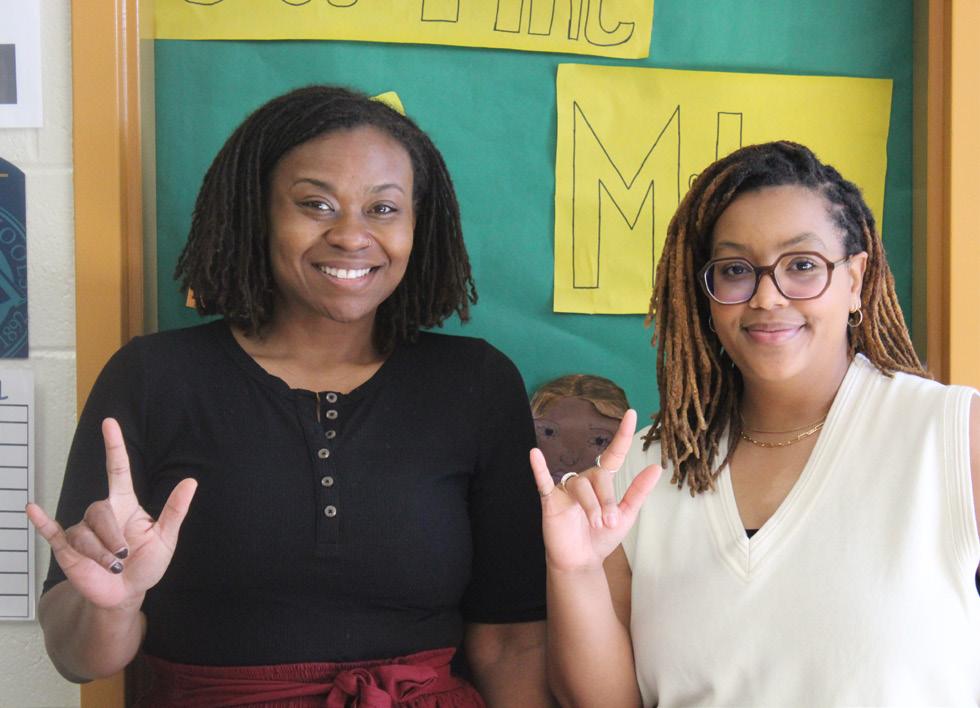
"I wanted to join ASL because I wanted to be a foster parent for kids that are deaf. I know that some Deaf kids go into foster care and end up feeling isolated from the people in their homes. I wanted those kids to have a safe home where they could feel seen and heard in their language,” Simone Mollohan (12) said.
The ASL course has brought a new culture to light: Deaf culture. Prior to the modern American Sign Language, one would learn today, there were many different sign systems created in America. One was Martha’s Vineyard sign language that sprung from a large and close community in the east islands of the early United States that chose to see Deafness as a superpower and not a disability.
Throughout the early history of America, Deaf individuals were subject to getting their hands tied behind their backs in oralist schools if they tried to sign, a failed attempt at eugenics which tried to “breed out” Deafness and doing insane tricks in airplanes in attempts to shock them into the hearing.
Even one of America’s heroes is a 'villain' in Deaf culture. It is well known that Alexander Graham Bell's invention of the telephone was a mistake. The original goal of the machine was to help his Deaf wife hear. Bell’s attempts at “helping” the Deaf community however did not stop there. Bell went on to open many oralist schools and without knowing enough signs to ask for a Deaf person’s opinion, declared that it was immoral to not help deaf people learn to speak and advocate for themselves rather than learn their language.
In 1864, Gallaudet University was established as a nonoralist school for the Deaf. Deaf people eventually created their own schools and the most famous is Gallaudet University where ASL got its parameters, making it an official language in the year 1964.
Deaf culture still has its trails in today’s education system with there being so many different options such as oral school, mainstream school, online school, and boarding schools for the deaf.
Each of these options does have its pros and cons. When a student is sent to oral school, they can often feel disconnected from their culture as signing is not encouraged, but they will have a better time communicating with the hearing population and are surrounded by deaf individuals.
Online schools can often be a task due to the affordability of tuition and devices. The distance between the student and teacher can also be an issue for behavioral reasons because once a deaf student turns away from their device it becomes almost impossible to get the student’s attention. Glitches in devices can also interrupt communication.
On the positive side, these schools have flexible schedules and keep students close to home. Boarding schools encourage signing and that sense of community but the number of schools for the Deaf are scarce and are expensive and often far from home.
Mainstream schools are schools like Marietta High in which a Deaf student goes to school with the general population. There is usually not a large deaf population in these schools creating a sense of isolation from other deaf individuals; however, the students do learn how to interact with hearing students and stay close to home.
Cities often have hotspot schools with deaf programs in each district. A.L. Burruss is one of those schools. On April 28 and March 1 Marietta High’s ASL 2 classes on field trips to A.L. Burruss to meet some of the Deaf students. One group met up with the second-grade class to observe and with the fifth-grade class to teach signs. The other went into the second-grade class to observe an interpreter in action as she communicated to the Deaf student in the class during their math time.
They then traveled to the fifth-grade class and showed them what the silent social was about and treated the class to iced tea and hot chocolate in preparation for the MHS annual Silent Social. In 2022, MHS held its first annual Silent Social. The most important aspect of a Silent Social is the theme, consistently highlighting milestones in the deaf community. Last year’s milestone was CODA, the 2021 Oscar Award-winning drama. Activities of last year’s silent social included: Enjoying food donated from our Zaxby’s sponsor, and pizza, an ASL scavenger hunt, and the possibility of being sprayed with silly string if caught by the “Shhh Police” and watching CODA.
The movie conveys the life of a 'Child Of a Deaf Adult' and their adversities in life being both a translator and a child, feeling caught in between two completely distinct cultures and not knowing how to balance both. In honor of its epic Oscars win, all participants of the event dressed in their finest apparel. Ms. Sims, the teacher who brought ASL to Marietta High was awarded the actual Oscar by student Rose Hicks.
“I wanted to give her [the Oscar] because she has impacted my life so much. She deserves to get recognized and to know she is appreciated. I know I wanna be an interpreter because of her. She has just inspired me so much,” Rose Hicks (11) said.
This year’s Silent Social Theme will be Silent Starbucks. The theme was chosen in honor of the Silent Starbucks in Washington DC near Gallaudet University. It was created to give drive-through and overall easy access for Deaf students and other deaf individuals
